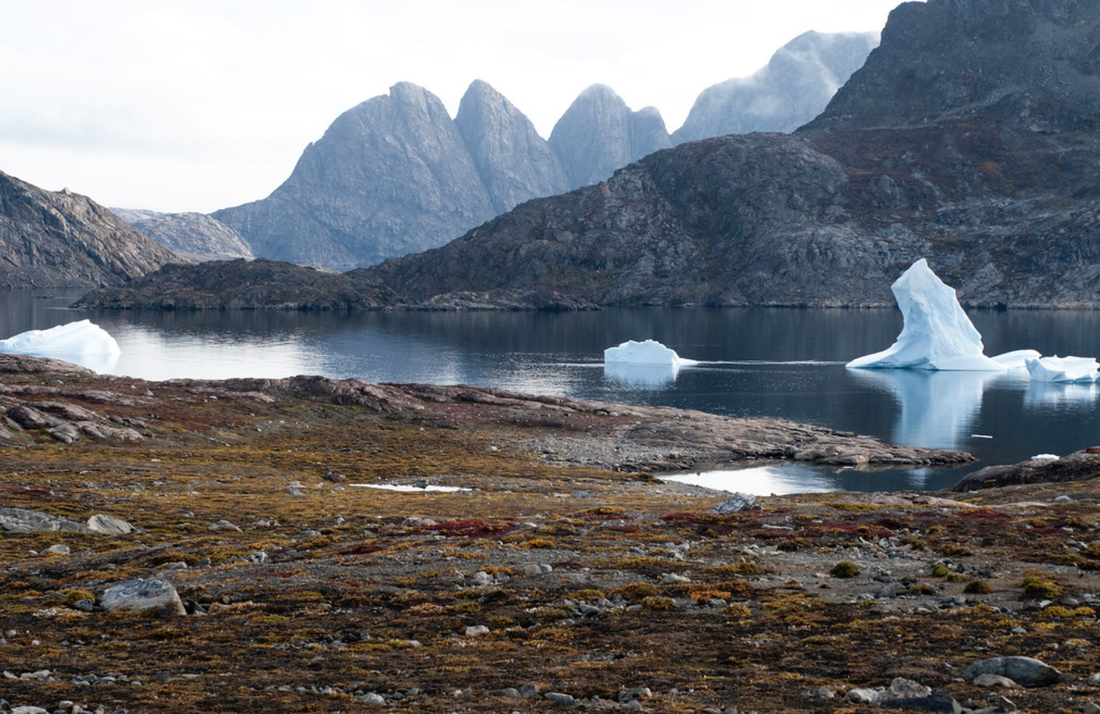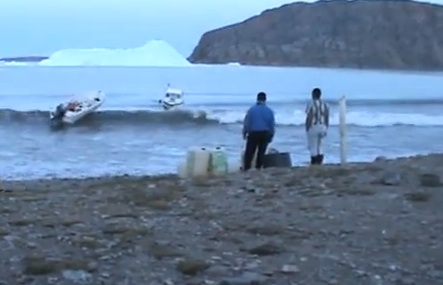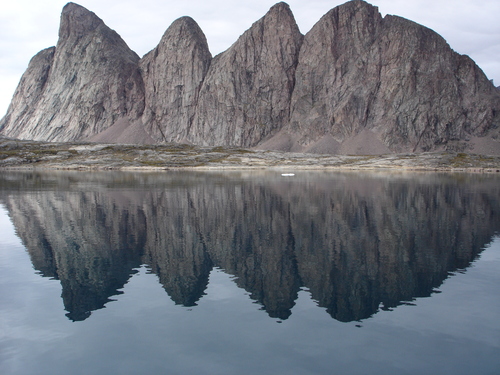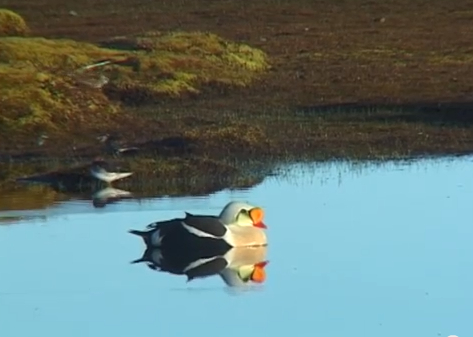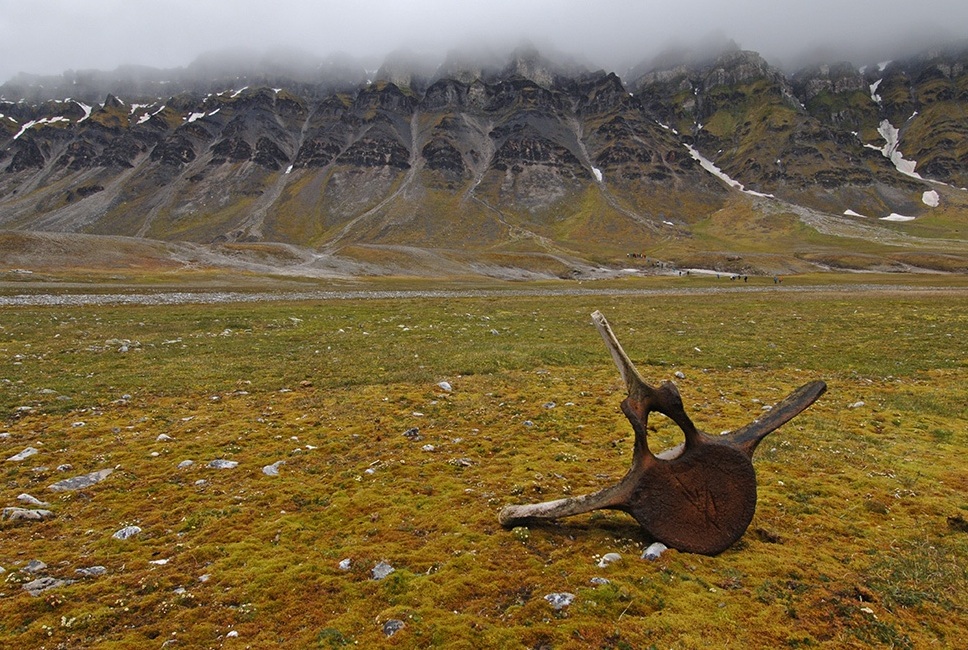The Arctic Riviera
|
Although the East Greenland fjords lie at a high latitude, well within the Arctic Circle and north of Iceland, the region is referred to as the "Arctic Riviera" because of its exceptional summer climate. It lies in the northern hemisphere zone of westerly winds, but it lies in the lee of the gigantic Greenland Ice Sheet -- and this explains why dry, stable conditions prevail during the short summer. East Greenland is the only place in the world where I have collapsed because of heat exhaustion, and where people are liable to suffer toxic shock because of the unwelcome attentions of millions of mosquitoes. If you are an explorer, walking for a hundred miles with a heavy pack on your back, you are liable to experience extreme discomfort..........
Discomfort can be exacerbated, of course, because of the fact that in the summer the sun never sets, and it never gets dark. That means that when the weather is warm and stable, there is no cooling relief to be had in the hours when one would rather like to be asleep! Daytime temperatures can climb over 30 degrees C, and high pressure conditions, with no clouds and no wind can prevail for weeks on end. At such times, aridity becomes a problem -- it can be very difficult indeed to find water, and to find a camp site with a guaranteed water supply. Water from meltwater streams can be full of sediment, making it undrinkable, and some of the tundra ponds can also be muddy and uninviting because of rotting vegetation. One reason for the climatic stability ids the offshore pack ice belt, which can be up to 200 miles wide. That effectively blocks off winds from the North Atlantic, preventing them from penetrating across the coastline. On the occasions where the pack ice breaks up, or drifts offshore, allowing a wide shore lead to develop, Atlantic weather may press inland, causing the weather to be much more unstable. But by and large, the "Arctic Riviera" label is well deserved, making this a wonderful area for summer fieldwork (and, today, for tourism) since at times one really does feel that one is on the shores of the Mediterranean, rather than in the High Arctic. ................ and a reminder that this is a strong country and an unquiet landscape. For about two minutes on 7th August 2010, breaking waves crashed onto the shore at Syd Kap, following the collapse and rolling of the iceberg in the background.
Erratic boulder near Syd Kap
Photo by Rolf Stange -- showing stranded icebergs in Nordostbugt, with Jameson Land in the distance.
A gorgeous midwinter photo from Nanok Travel, showing Scoresbysund in the noontime glimmer. I think that might be Kap Brewster in the distance. Note the lone figure of a man far out on the ice.
|
Wildlife is abundant in the East Greenland fjords, partly because there is a very large ice-free area here, and partly because of the stability of the summer weather. Vast numbers of migrating birds use the fjord shores and the tundra of Jameson Land as their nesting areas, and among the mammals musk-oxen, hares and foxes are the most numerous. Not so long ago there were reindeer and wolves here as well, but now they are more or less extinct, apart from stray animals that come down from the north, probably travelling on the shore ice during the winter. Polar bears are present in the fjords as well, although they are seldom seen during the summer. Marine life is abundant, with walruses, seals, narwhals and other cetaceans found in Scoresby Sund and its tributary fjords.
Giant erratic in Kjove Land
Nordvestfjord, not far from the snout of Daugaard-Jensen Gletscher
|













